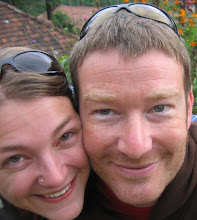 rehydration package' hotel booking. After all, scuba diving and catching up is thirsty business.
rehydration package' hotel booking. After all, scuba diving and catching up is thirsty business.We planned to make an early start as we had about 300km to travel and it was a good job we did as today of all days was when our travel karma points must have ran dry. We were at the bus station for 8 a.m. with 9 hours to play with before Si's arrival. We were told that the 8.30 bus had been cancelled and we'd have to wait until 10. As e had a bus to catch from Qeft at 11 a.m. we were keen to get moving, but as it was only 40 minutes away the 10 o'clock bus would still be ok for us. However this bus didn't show up until 11.30 and by 11.45 it had broken down and we stranded on the side of the road, so nearly 4 hours down and we had only moved 30km. We managed to flag down a truck that took us to Qeft. Once in Qeft we realised ( no surprise) that we had missed the bus and the next bus wasn't until at 6 p.m. We asked the shared taxi (battered old 7 seater Peugeot) drivers to take us but we were told that they weren't allowed to take foreigners as we couldn't travel without the police convoy, "Problems for people like you with the police man" we were told. They suggested taking a 'special' taxi, a taxi as we know it i.e. unshared, but even these guys weren't keen on taking us foreigners through the many check points outside of convoy hours.
Eventually after a lot of talking and whispers in policemen's ears we were ushered into a car. Following all the involvement with the police and our awareness of breaking the convoy rules we wanted to check with the driver that the agreed price hadn't changed. "Still same price, 100 Egyptian pounds?" "Yes, yes" the driver said. But as each police check point involved some chit chat/explaination from our driver he constantly demanded some "Baksheesh" or tip. We were just relieved to be hurtling towards the coast. And that wonderful 180km drive through the sandstone formation in the desert only cost us (including baksheesh) $26!
We still had 65km to travel along the coast and it was already 4.15, we had 40 minutes to meet Si at the airport. We chartered another 'special' taxi and sped down the coast road and we became habitualised very quickly to the car's speed limit warning bleeper. We made it to the airport in time to surprise Si and we were soon in our hotel for a week of bliss, relaxation, scuba diving and queueing for the 'free' bar with the pale Europeans and the thristy Russians.























































